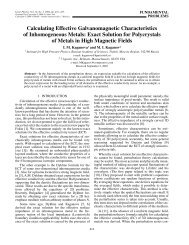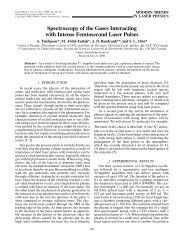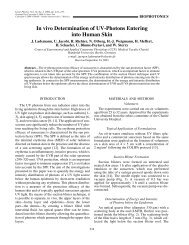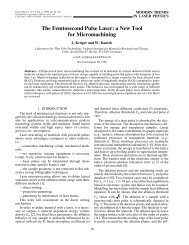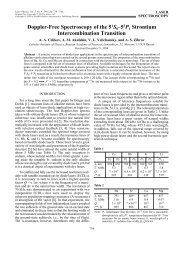House Style Guide 2011 - MAIK "Nauka/Interperiodica"
House Style Guide 2011 - MAIK "Nauka/Interperiodica"
House Style Guide 2011 - MAIK "Nauka/Interperiodica"
- TAGS
- maik
- www.maik.ru
Create successful ePaper yourself
Turn your PDF publications into a flip-book with our unique Google optimized e-Paper software.
Changes are highlighted in yellow.<br />
Correct: Discussions were held in Moscow on July 12 and in Washington on July 17.<br />
Do not use a comma to divide compound phrases of the type either … or, neither … nor, both …<br />
and, between … and, and from … to.<br />
Incorrect: These reflectors are used both for measuring the lengths of the optical paths, and<br />
for measuring the bare length.<br />
Correct: These reflectors are used both for measuring the lengths of the optical paths and<br />
for measuring the bare length.<br />
3.4.8 In a series containing three or more items, use a comma before and and or. Note that<br />
translators sometimes incorrectly omit and in a series when it is not in the Russian original.<br />
The reaction produced water, carbon dioxide, and hydrogen.<br />
The equation for this system is F = pVT, where p is pressure, V is volume, and T is temperature.<br />
3.4.9 Use commas to set off transitional adverbs and expressions (like however, therefore,<br />
consequently, thus, nevertheless, finally, on the contrary, on the other hand, in particular, in<br />
addition, as a rule) and expressions that introduce an illustration or example (like for example (e.g.),<br />
that is (i.e.), namely). When such words and phrases are used as conjunctive adverbs, connecting<br />
two independent clauses, they should be preceded by a semicolon (see Section 3.5.2).<br />
This method fails, however, when the pressure drop is nonlinear.<br />
He will travel through two countries, namely, France and England.<br />
Many neural networks, for example, the Hopfield networks, tend to stabilize at the local energy minimum.<br />
For transitional adverbs and expressions that are embedded in the sentence, the commas around them<br />
may be omitted if there is no distinct break in thought.<br />
It is critical, therefore, that we reexamine these cost estimates. (distinct break in thought)<br />
It is therefore critical that we reexamine these cost estimates. (spoken with rising voice)<br />
When transitional adverbs and phrases precede the second part of a compound predicate, they are<br />
treated as interrupting expressions and are set off by two commas.<br />
A mechanism should exist in the network that, on one hand, can control the competition of hypotheses and, on<br />
the other hand, can adaptively control the redistribution of the magnitudes of stimulation and retardation.<br />
3.4.10 Use a comma to introduce direct questions or quotations, but if the quotation is used as a<br />
subject, predicate nominative, or predicate adjective, or if it is not being presented as actual<br />
dialogue, a comma is not used. Note that, if the quotation is a sentence, it ordinarily begins with a<br />
capital letter; if it is a fragment, it does not. However, a colon is used to introduce a formal<br />
statement, extract, or speech in dialogue (generally more than one sentence).<br />
Mary said, “I am leaving.”<br />
“The computer is down” was the reply he feared.<br />
We quote from the address: “It now seems appropriate …<br />
3.4.11 In order to avoid ambiguity, use a comma to indicate the omission of a word or words, and<br />
especially a word or words used earlier in the sentence. However, this construction is often difficult<br />
20



